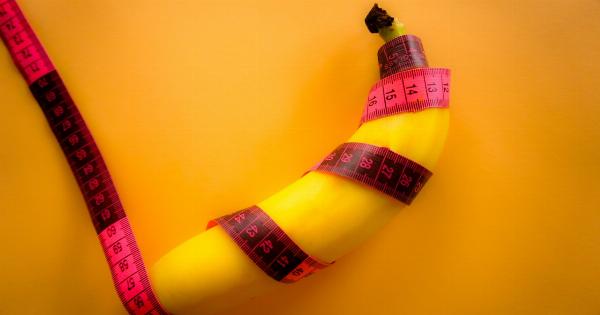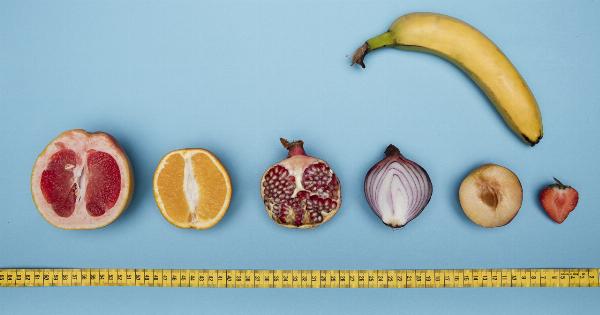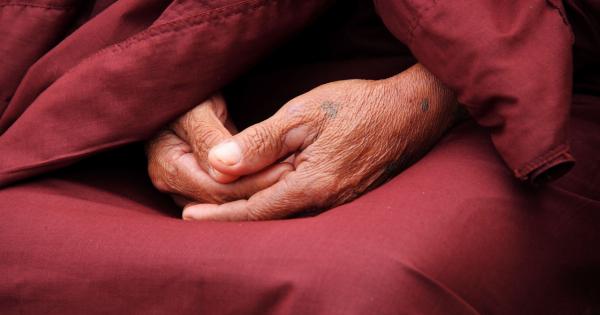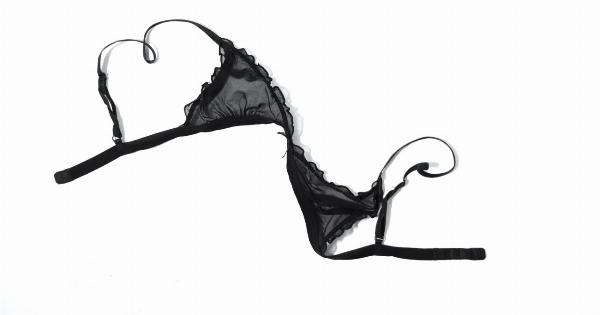Penis size has been an intriguing topic that has always piqued the curiosity of many.
While most men believe that their member is smaller or larger than average, do they actually know what the average penis size is? And does penis size have any correlation with microbial balance in different age groups? In this article, we aim to explore the average penis size in different age groups and how it correlates with microbial balance.
Penis Size by Age Group
One of the most common misconceptions about penis size is that it stays the same throughout a man’s life. However, this is far from the truth. According to research, penis size changes a lot throughout different age groups.
Age Group 18-24
Men in this age group typically have the largest penis size. According to a study conducted by LifeStyles, the average penis size of men in this age group is 5.46 inches when erect.
Age Group 25-34
Men in this age group have the second-largest average penis size. According to the same study by LifeStyles, the average penis size of men in this age group is 5.44 inches when erect.
Age Group 35-44
Men in this age group have a slightly lower average penis size than those in the previous age group. According to the same study, the average penis size of men in this age group is 5.25 inches when erect.
Age Group 45-54
Men in this age group have an even lower average penis size. According to the same study, the average penis size of men in this age group is 5.09 inches when erect.
Age Group 55+
Men in this age group have the smallest average penis size. According to the same study, the average penis size of men in this age group is 4.88 inches when erect.
Microbial Balance in Different Age Groups
Microbial balance is essential for maintaining overall health. The genital microbiome plays a critical role in maintaining the microbial balance in the genital area.
However, the microbial balance in the genital area changes due to various factors such as age, sexual activity, diet, and lifestyle. Let’s take a closer look at how the microbial balance differs in different age groups.
Age Group 18-24
Men in this age group typically have a healthy genital microbiome characterized by a high number of Lactobacilli. The pH of the genital area is also acidic, which helps maintain a healthy genital microbiome.
Age Group 25-34
Men in this age group have a slightly lower number of Lactobacilli compared to the previous age group. The pH of the genital area also becomes less acidic, which can lead to an imbalanced genital microbiome.
Age Group 35-44
Men in this age group have a further decline in the number of Lactobacilli in the genital area. The pH of the genital area becomes even less acidic, increasing the risk of developing an imbalanced genital microbiome.
Age Group 45-54
Men in this age group have a significantly lower number of Lactobacilli in the genital area. The pH of the genital area becomes more alkaline, which can contribute to an imbalanced genital microbiome.
Age Group 55+
Men in this age group have the lowest number of Lactobacilli in the genital area. The pH of the genital area becomes even more alkaline, making the genital microbiome more susceptible to imbalances.
Correlation between Penis Size and Microbial Balance
Research shows that there is a correlation between penis size and microbial balance. Men with larger penis size tend to have a healthier genital microbiome.
This is because larger men generally have a higher testosterone level, which promotes the growth of healthy bacteria in the genital area. On the other hand, men with smaller penis size tend to have a lower testosterone level, which can lead to an imbalanced genital microbiome.
Conclusion
Penis size and microbial balance are two different aspects of male sexual health that are intricately linked.
While penis size changes throughout different age groups, microbial balance also changes due to various factors such as age, diet, and lifestyle. Maintaining a healthy genital microbiome is crucial for overall health and wellbeing. With the right knowledge and care, men can ensure that their genital area remains healthy, regardless of their age or penis size.























